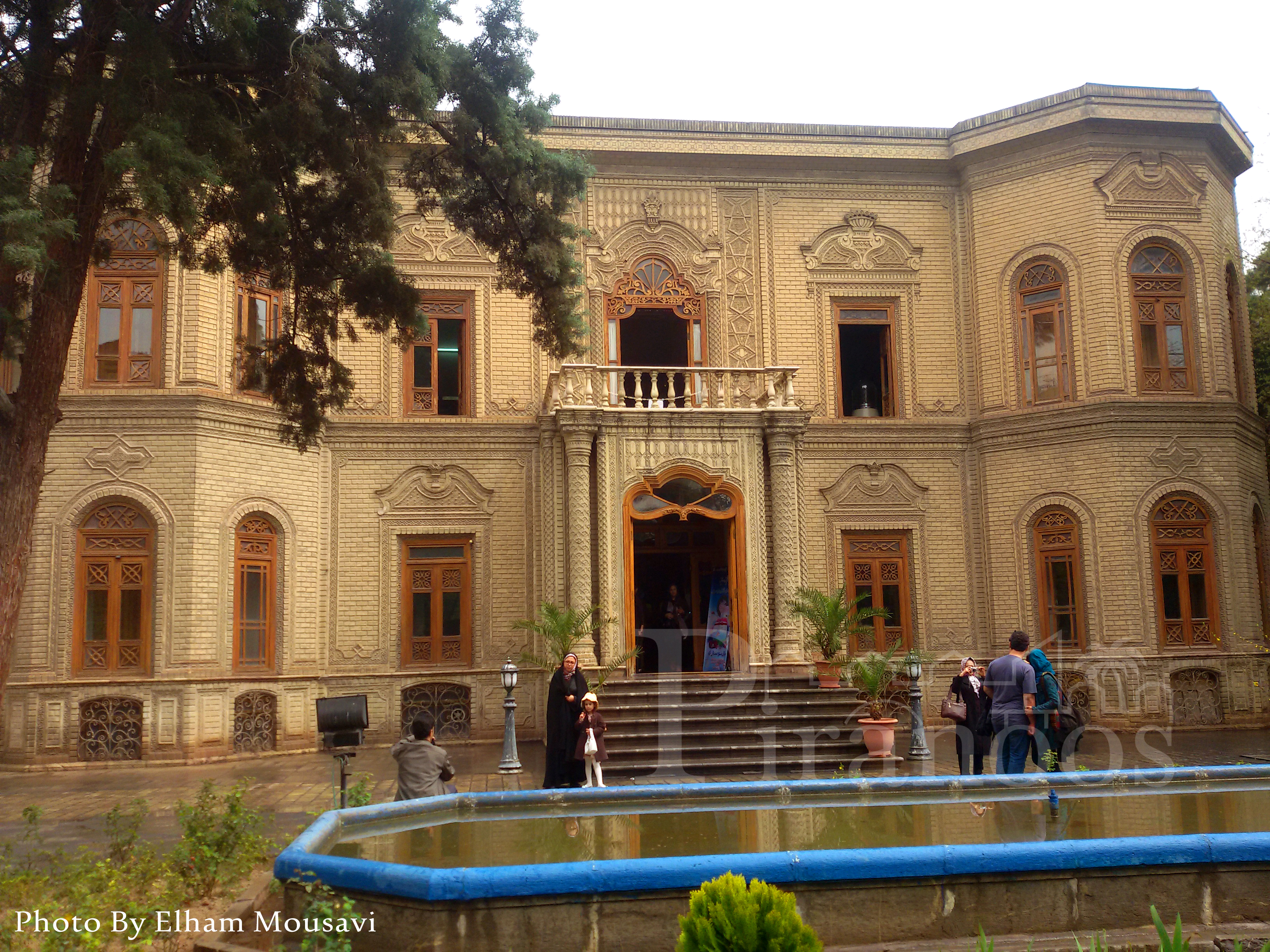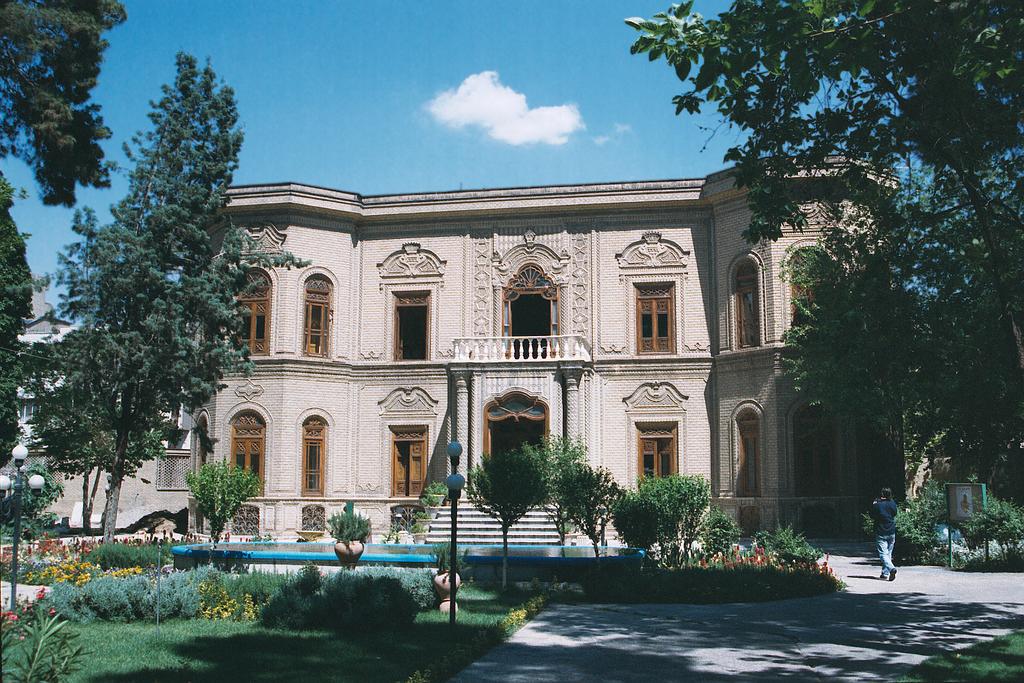Si-e Tir(30th Tir) street is one of the oldest, most magnificent streets in Tehran. It is located in the historic texture of the capital and in recent years, has turned to one of the attractions of the city. 30th Tir is house to many monuments and museums and it is a great place to observe the architecture and style of the old streets of Tehran. One of the attractions which you can visit while in this street is the Abgineh museum. This beautiful museum is located in a historical house (number 55) and a large garden is surrounding it. Join us in this article to explore this interesting museum together!

Abgineh is a museum specifically designed to house glassware and ceramics of Iran from different periods. It is also known as “Glassware and Ceramic Museum of Iran”. As mentioned earlier, you need to go to the 30th Tir Street (formerly known as Ghavam Al Saltaneh Street), located at the historic center of Tehran. To reach there, you can use the metro and take off at Saadi station. Then, walk for about 20 minutes to the west in Jomhouri street. To use the bus, you should take Jomhouri – Baharestan square buses and after 5 minutes walking, you’ll be at 30th Tir street. Except for Mondays, you can visit this museum from 8 a.m to 4.30 p.m each day.
The building of the museum itself has a long story. It is a 90-year-old house, with a very special design and architecture. It was, in fact, a private residence of Ahmad Qavam, Iran’s prime minister from 1921 until 1951. For seven years, the house was served as the Embassy of Egypt. It also became the Embassy of Afghanistan for some years. In 1980, the house turned into a museum and after that was registered as one of Iran’s National Heritage.
The façade of the building is adorned with delicate brick designs and the wooden windows and doors of the house add to its beauty. The design of the facade includes 51 brick reliefs which bring the art of Seljuk era to mind. The porch and the pillars of the building’s entrance are demonstrations of late Qajar and Pahlavi architectures. The combination of the colors has created a lovely harmony. The building perfectly shows the art of architecture of Tehran during the Qajar era.
The interior design is also very attractive. A beautiful staircase with the form of a horseshoe connects the first floor to the second, which leads to the mirror hall. The design of the staircase is inspired by Russian architecture during the 18th and 19th centuries. As you walk into this floor, you are going to see thousands of pieces of mirror used for designing the corridor and the hall. In total, there are 6 halls in this building, showcasing many artifacts, glassware, and ceramics from different eras. The delicate plaster works of the ceiling are also very impressive.

The project of converting the building into a glass and pottery museum of Iran was carried out under the supervision of an Austrian architect and engineer called Hans Hollein. He has applied the features of pre- and post-Islamic Iranian architectural to design and build object showcases and the museum´s halls. Here, you have the chance to see many objects dating back to 4000 years ago (when the Persia Empire started to use glass) as well as objects made during the contemporary era.
The museum building has various sections such as theaters, cultural product sections, libraries, and offices. The showroom consists of six halls. On the ground floor of pre-historic, you will see the pre-Islamic objects.
On the first floor of the museum, there are other halls where you can see the objects from the Islamic to the contemporary era.
At the entrance of the museum, there are tools, gadgets, materials, and colors used in glassmaking, as well as some samples of the objects made of glass.
At the audio-visual hall, you will see a sample of the prehistoric tomb with a skeleton of a prehistoric man with all his belongings and ornaments. At that time, people used to believe that even after death, they need their stuff to continue living on the other side! Mina hall is where the oldest objects are kept. The design of the showcases is inspired by the Achaemenid architecture in Persepolis.
At the Crystal hall, you will see the artifacts made from crystal and glass. The designs are similar to the Mina hall, reminding of the Persepolis and Naqsh-e Rostam columns. Sadaf hall is home to glass and ceramic objects of the Islamic era. The design of this hall resembles a shell. At Zarrin Fam hall, you will see many different aristocratic objects with a special design. These objects belonged to upper-class families.
The museum showcases a unique collection of glassware and ceramics and is an ideal place for the fans of this art to visit while in Tehran.